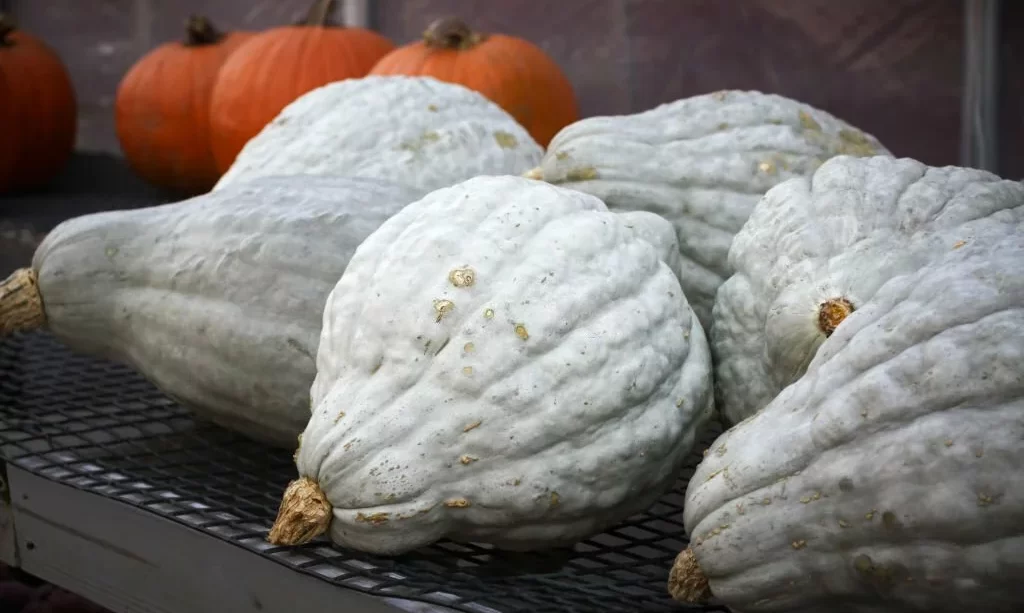Hubbard squash, with its large size and bumpy, teardrop-shaped exterior, is a versatile winter squash that adds both flavor and nutrition to a variety of dishes. With a sweet, fine-textured flesh, this squash is a favorite in many kitchens during the fall and winter months. In this article, we will explore the art of cooking Hubbard squash, discussing the various methods, flavoring options, and creative recipes to make the most of this seasonal gem. Whether you’re a seasoned chef or a cooking enthusiast, unlocking the potential of Hubbard squash can elevate your culinary repertoire and bring warmth to your table.
Selecting and Preparing Hubbard Squash
Before delving into the cooking process, it’s crucial to choose a ripe Hubbard squash and prepare it properly. When selecting a squash, look for one that feels heavy for its size and has a firm, unblemished exterior. The color may vary from green to orange, depending on the specific variety.
Preparing Hubbard squash for cooking involves a few essential steps. Start by washing the squash thoroughly to remove any dirt or debris. Depending on your chosen cooking method, you have options for cutting and peeling. Some may prefer to cut the squash into manageable sections, removing seeds and peeling before cooking, while others may opt for roasting the squash whole and dealing with the skin later. The method chosen largely depends on personal preference and the recipe at hand.
By taking the time to select a ripe squash and preparing it appropriately, you set the stage for a successful cooking experience with Hubbard squash, ensuring that its rich flavor and nutritional benefits are fully realized in your culinary creations.
Basic Cooking Methods
Hubbard squash lends itself to various cooking methods, each offering a distinct flavor profile and texture. One popular approach is roasting, which can be done in different forms. For a simple and rustic option, consider roasting the whole Hubbard squash. After washing and cleaning, place the squash in the oven until it becomes tender. Alternatively, you can cut the squash into cubes or wedges, toss them with olive oil, salt, and pepper, and roast for a caramelized and savory result.
Pureeing Hubbard squash is another basic cooking method, offering a smooth and versatile base for various dishes. After cleaning and preparing the squash, steam or boil the chunks until they are soft enough to be easily mashed or blended. This puree can then be used in soups, stews, or as a standalone side dish.
Flavoring and Seasoning Options
Hubbard squash’s naturally sweet and nutty flavor can be enhanced with a variety of seasonings and flavorings. For those with a sweet tooth, consider a maple-glazed preparation by drizzling maple syrup over roasted squash or adding brown sugar and cinnamon for a delightful autumnal twist. These sweet variations make for delicious side dishes or even desserts.
On the savory side, experiment with herbed roasted Hubbard squash by seasoning with a blend of herbs like thyme, rosemary, and sage. For a more robust flavor, try infusing the squash with garlic and parmesan. These savory options work well as standalone dishes, additions to salads, or as flavorful components in complex recipes.
By exploring these basic cooking methods and flavoring options, you can unlock the full potential of Hubbard squash in your culinary endeavors. The versatility of this squash allows for both sweet and savory applications, making it a delightful addition to your fall and winter cooking repertoire.
Incorporating Hubbard Squash into Various Dishes
The versatility of Hubbard squash extends beyond basic cooking methods, making it a fantastic ingredient to incorporate into a wide range of dishes. For those seeking comfort on chilly days, Hubbard squash is an excellent addition to soups and stews. Create a creamy Hubbard squash soup by blending the puree with vegetable broth and aromatic spices for a rich and velvety texture. Alternatively, try a hearty stew by combining Hubbard squash chunks with lentils, creating a wholesome and nutritious meal.
As a side dish or salad component, Hubbard squash can elevate your dining experience. Explore a Hubbard squash risotto, infusing the creamy rice with the sweet and earthy notes of the squash. For a lighter option, consider a roasted squash salad featuring mixed greens, nuts, and a tangy vinaigrette. These dishes showcase the squash’s adaptability, allowing it to shine in both comforting and refreshing culinary creations.
Conclusion
Cooking with Hubbard squash opens up a world of possibilities in the kitchen, from savory main courses to sweet desserts. The rich, nutty flavor and velvety texture of this winter squash make it a delightful addition to fall and winter menus. Whether you’re roasting, pureeing, or incorporating it into various dishes, the Hubbard squash’s versatility allows you to experiment and discover new culinary delights.
As you explore the diverse cooking methods and flavoring options outlined in this guide, remember that creativity is key. Don’t hesitate to try new recipes, experiment with different seasonings, and make Hubbard squash a staple in your seasonal cooking repertoire. Enjoy the warmth and richness that this remarkable squash brings to your table!




